Xishuangbanna Wild Elephant Valley: Where Nature and Culture Unite
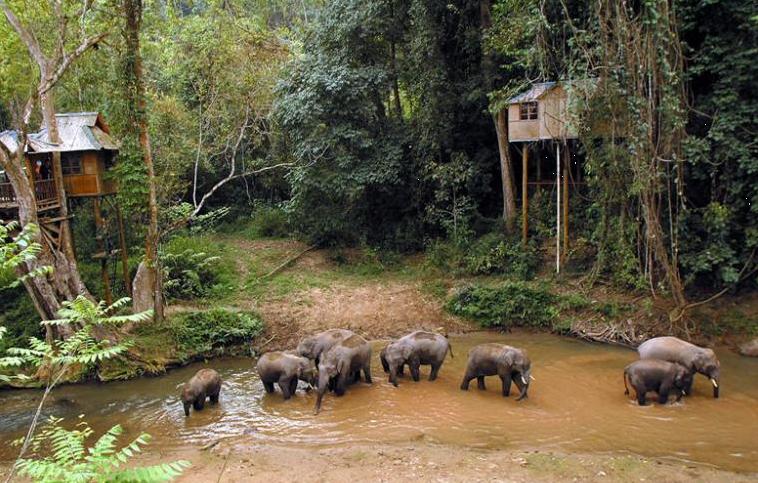
An Essential Guide to Visiting Xishuangbanna Wild Elephant Valley
Nestled in the lush embrace of Yunnan Province, Xishuangbanna Wild Elephant Valley is a sanctuary where nature thrives and one of the last bastions for wild Asian elephants. Just a short drive from the bustling city of Jinghong, this remarkable destination offers international travelers a rare opportunity to witness these majestic creatures in their natural habitat. Spanning 3.7 square kilometers of dense rainforest, the valley is not only home to wild elephants but also a myriad of other protected species, including green peacocks and bison.
As you wander through this tropical paradise, the vibrant sounds of the rainforest envelop you, inviting you to explore its wonders. From the thrilling experience of riding a cable car above the treetops to the serene elevated walkways that provide breathtaking views of elephants at play, every moment spent here is a chance to connect with nature. The valley serves not only as a haven for wildlife but also as a platform for cultural exchange, featuring performances that showcase the rich traditions of the local ethnic groups.
Whether you’re an avid animal lover, a nature enthusiast, or simply seeking an unforgettable adventure, Xishuangbanna Wild Elephant Valley promises a unique glimpse into the delicate balance of wildlife conservation and human interaction. Prepare to embark on a journey that will leave you with lasting memories and a deeper appreciation for one of nature’s most remarkable inhabitants.
In This Guide
- An Essential Guide to Visiting Xishuangbanna Wild Elephant Valley
- The Rich History and Legends of Xishuangbanna Wild Elephant Valley
- Main Highlights: What You Absolutely Can’t Miss
- Planning Your Visit: A Practical Guide
- Tickets: Prices, Booking, and Tips
- How to Get There: A Complete Transportation Guide
- Local Cuisine and Accommodation Nearby
- Frequently Asked Questions
- Final Thoughts on Your Trip
The Rich History and Legends of Xishuangbanna Wild Elephant Valley
Nestled within the lush embrace of Yunnan Province, the Wild Elephant Valley has a captivating history intertwined with the rich cultural tapestry of the Xishuangbanna region. This area, known for its diverse ecosystems and vibrant ethnic communities, has long been a sanctuary for the majestic Asian elephant, a species that holds both ecological and cultural significance.
Historically, Xishuangbanna has been home to the Dai people, who have revered elephants for centuries. These gentle giants are not only integral to the local ecosystem but also play a vital role in the cultural practices and folklore of the Dai. Stories of elephants symbolizing strength and wisdom are woven into the fabric of local legends, echoing through generations. The Wild Elephant Valley serves as a living testament to this relationship, acting as a bridge between humans and these magnificent creatures.
The establishment of Wild Elephant Valley as a nature reserve marked a significant milestone in wildlife conservation in China. In response to the dwindling population of Asian elephants due to habitat loss and poaching, the valley was transformed into a protected area in the 1990s. It became the first national park in China dedicated to wildlife conservation and environmental protection, paving the way for the preservation of not only elephants but also other endangered species, including the Indian bison and green peacock.
As part of its ongoing conservation efforts, the valley is equipped with educational facilities like the Asian Elephant Museum and various programs aimed at raising awareness about the plight of these animals. Visitors can explore this unique environment, gaining insight into the behaviors, habitats, and challenges faced by wild elephants.
Moreover, the valley is steeped in local festivities, notably the annual Water Splashing Festival, a vibrant celebration of the Dai culture that attracts visitors from far and wide. This event, celebrated each April, emphasizes the harmonious relationship between humans and nature and showcases the region’s rich traditions through music, dance, and of course, the joyous splashing of water.
Today, the Wild Elephant Valley stands not only as a crucial habitat for one of China’s most iconic species but also as a symbol of the enduring legacy of the Xishuangbanna region. As travelers wander through its verdant trails and elevated walkways, they become part of a narrative that honors the past while looking towards a future of sustainability and coexistence. The valley is a living story, one that continues to unfold amidst the whispers of the rainforest, inviting all who visit to connect with the land, its history, and its remarkable inhabitants.

Xishuangbanna Wild Elephant Valley.
Main Highlights: What You Absolutely Can’t Miss
Discover the enchanting beauty and wildlife of Xishuangbanna Wild Elephant Valley, a remarkable destination that offers a unique blend of natural wonders and cultural experiences. Here are the main highlights you absolutely cannot miss during your visit:
1. Elevated Observation Walkway
Take a stroll along the Elevated Observation Walkway, which spans 2,280 meters, offering unparalleled views of the lush surroundings. This walkway leads you close to ponds where elephants frequently gather to drink and bathe. For an unforgettable experience, make your way to the Elephant Observation Platform at the end of the trail, where you can spot these magnificent creatures in their natural habitat, especially during the early morning or late afternoon.
2. Asian Elephant Museum
Dive deeper into the world of Asia’s gentle giants at the Asian Elephant Museum, the first of its kind in China. This thoughtfully curated space features exhibits that educate visitors about the conservation challenges faced by Asian elephants. Interactive displays and detailed information make it a must-visit for animal lovers and anyone interested in wildlife conservation.
3. Rainforest Sightseeing Cable Car
Experience breathtaking panoramic views of the tropical rainforest from the comfort of the Rainforest Sightseeing Cable Car. Stretching 2,063 meters, this semi-enclosed ride takes approximately 35 minutes one way. As you ascend, keep your eyes peeled for glimpses of wildlife, including the elusive wild elephants roaming below.
4. Butterfly Garden
Immerse yourself in a colorful world at the Butterfly Garden, where hundreds of butterfly species flutter among vibrant flowers. This serene spot is perfect for photography enthusiasts and those looking to relax in nature’s beauty. Spend some time here to appreciate the delicate balance of the ecosystem in Wild Elephant Valley.
5. Cultural Performances at Rainforest Theatre
Don’t miss the chance to experience the rich cultural heritage of the region at the Rainforest Theatre. Throughout the day, enjoy traditional songs and dances performed by local ethnic minority groups, including the Blang, Wa, and Dai. These performances offer a glimpse into the vibrant traditions and customs that are an integral part of life in Xishuangbanna.
6. Walking with Elephants
While currently on hold due to health and safety protocols, the Walking with Elephants program is a unique opportunity for visitors to interact with elephants in a respectful and natural setting. If it resumes, this program allows you to join elephants on their daily walks through the rainforest and even offers a chance to feed them carrots, fostering a deeper connection with these magnificent beings.
7. Explore Diverse Hiking Trails
For those who enjoy the great outdoors, Wild Elephant Valley boasts a series of scenic hiking trails that wind through diverse ecosystems, including montane rainforests and subtropical broadleaf forests. Along the way, you’ll encounter unique flora, including orchids and other rare plants, making it a paradise for nature enthusiasts.
8. Wildlife Spotting
Beyond elephants, the valley is home to a plethora of other protected species such as Indian bison, green peacocks, and macaques. Keep your camera handy for unexpected wildlife encounters as you traverse the park’s trails and observation areas.
Plan Your Visit
To make the most of your trip, arrive early and start at the south gate, where you can explore various attractions before taking the cable car ride. The best months to visit are during the dry season from October to April, particularly at dawn or dusk when wildlife is most active.
With these highlights in mind, you’re all set to embark on an unforgettable adventure in Xishuangbanna Wild Elephant Valley, where nature and culture converge in spectacular fashion.
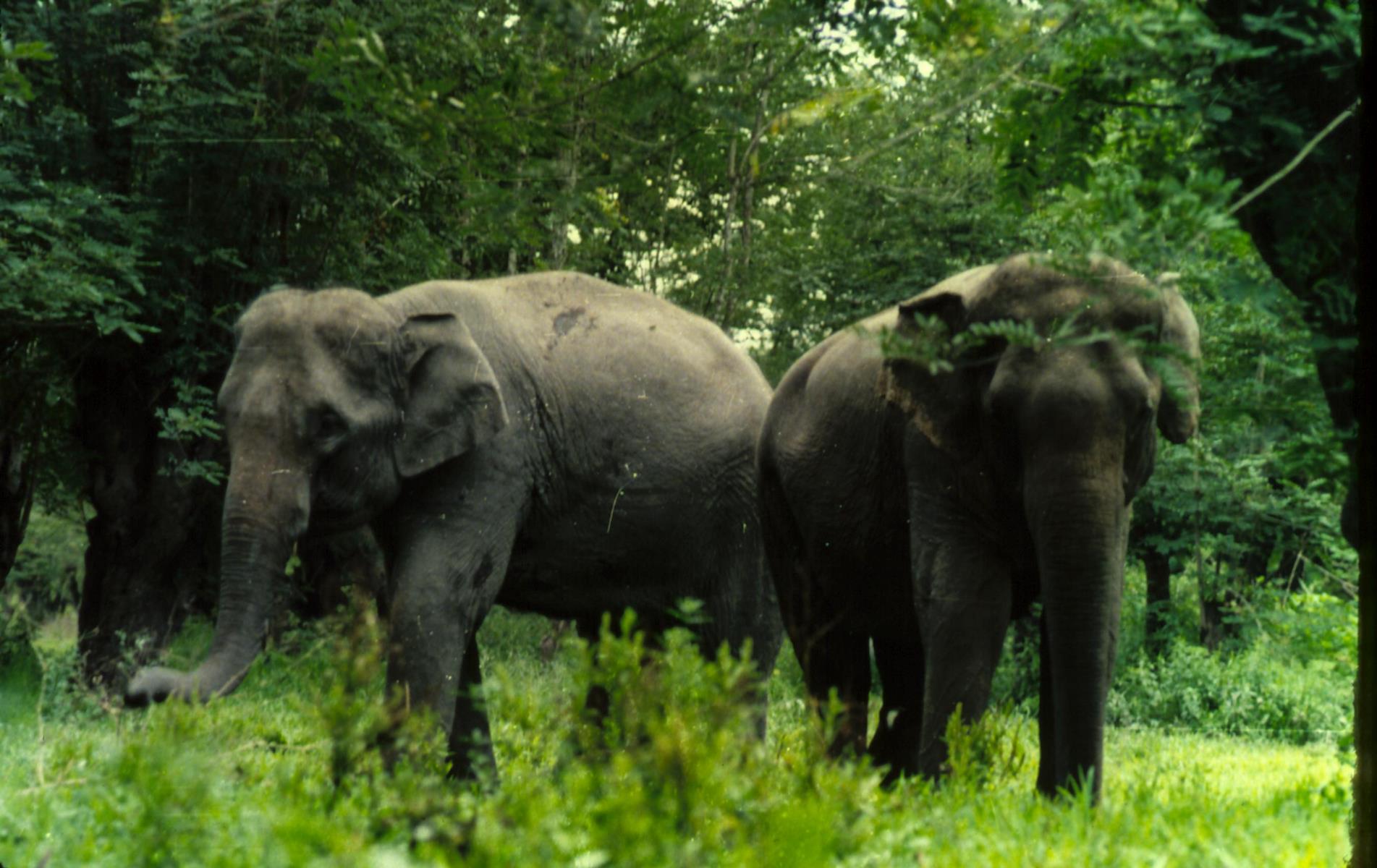
Xishuangbanna Wild Elephant Valley.
Planning Your Visit: A Practical Guide
Practical Guide to Visiting Xishuangbanna Wild Elephant Valley
Nestled in the heart of Yunnan Province, Xishuangbanna Wild Elephant Valley (野象谷) offers a unique opportunity to immerse yourself in one of China’s most enchanting natural landscapes. Here’s everything you need to know to plan your visit to this extraordinary destination.
Getting There
By Air:
The nearest airport is Xishuangbanna Gasa International Airport (IATA: JHG), located about 40 kilometers (24 miles) south of the valley. Frequent flights connect this airport with major cities in China, making it an accessible entry point.
By Road:
From Jinghong, the capital city of Xishuangbanna, you can take a taxi or a public bus to the valley. The journey takes approximately one hour, providing scenic views of the lush surroundings.
Opening Hours and Admission
- Opening Hours: 8:00 AM – 6:00 PM
- Admission Fee: Approximately CNY 60 per person
- Recommended Duration: Plan to spend around 2-3 hours to fully enjoy the valley’s attractions.
Best Time to Visit
To maximize your experience, aim to visit during the dry season from October to April. This time frame not only provides pleasant weather but also increases your chances of spotting wild elephants, particularly at dawn and dusk when they are most active.
Must-See Attractions
-
Elevated Observation Walkway:
This 2,280-meter-long walkway offers the best vantage point to observe wild elephants at play. Don’t miss the section leading to the Elephant Observation Platform, where you can often see elephants drinking and bathing. -
Asian Elephant Museum:
As China’s first themed museum dedicated to Asian elephants, this venue provides insightful exhibits about their habitat and conservation status. It’s a must-visit for animal lovers. -
Rainforest Sightseeing Cable Car:
Take a scenic ride on the 2,063-meter cable car for breathtaking views of the rainforest and potential sightings of wild elephants below. -
Butterfly and Lizards Gardens:
Explore these gardens to enjoy the vibrant flora and fauna. The butterfly garden features numerous species fluttering through the lush landscape, while the lizards garden showcases protected reptiles native to the region. -
Cultural Performances:
Experience the local culture by attending performances of traditional songs and dances, held at the Rainforest Theater. This is a delightful way to engage with the rich heritage of the local ethnic groups.
Activities and Experiences
-
Walking with Elephants:
While this program may currently be restricted due to health guidelines, it typically offers a touching experience by allowing visitors to interact with elephants in a respectful manner. -
Hiking Trails:
For the adventurous, there are several scenic trails winding through the valley. These paths lead you through varied ecosystems, providing opportunities to encounter diverse wildlife.
Practical Tips
-
What to Wear:
Dress comfortably and wear sturdy shoes suitable for walking. Lightweight, breathable clothing is advisable, as the climate can be humid. -
Bring Essentials:
Don’t forget sunscreen, insect repellent, and a reusable water bottle to stay hydrated during your visit. -
Plan Your Route:
It’s recommended to enter through the south gate for more attractions. Start your day with the cable car ride, proceed to the Elevated Observation Walkway, and conclude your visit at the Asian Elephant Museum.
Conclusion
Xishuangbanna Wild Elephant Valley is more than just a natural reserve; it’s a journey into the heart of a unique ecosystem and a chance to witness the beauty of Asian elephants in their natural habitat. With this practical guide, you’re well-equipped to make the most of your visit to this stunning destination in Yunnan Province.
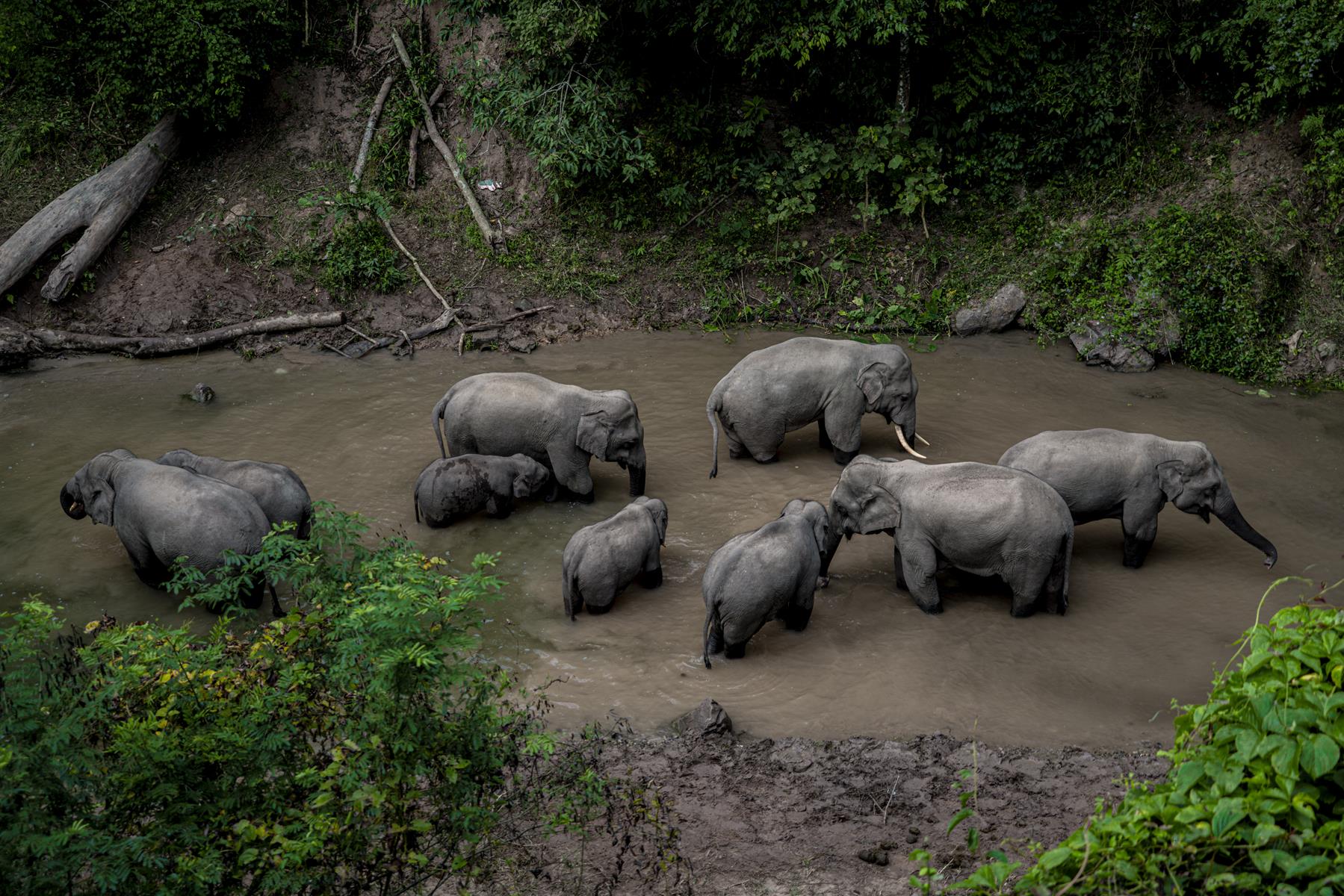
Xishuangbanna Wild Elephant Valley.
Tickets: Prices, Booking, and Tips
When planning your visit to Wild Elephant Valley, understanding the ticketing options, prices, and booking tips will enhance your experience in this magnificent natural paradise.
Ticket Information
Admission to Wild Elephant Valley is priced at CNY 60 per person. This ticket grants you access to the park’s stunning landscapes, diverse wildlife, and various attractions, including the Asian Elephant Museum and the Elevated Observation Walkway.
Booking Tips
-
Purchase on Arrival: Tickets can be purchased at the entrance of the park. However, during peak tourist seasons (particularly from October to April), it’s wise to arrive early to avoid long lines and secure your entry.
-
Consider Guided Tours: For a more enriched experience, consider booking a guided tour. This can often include transportation from Jinghong and may provide insights from knowledgeable guides about the park’s ecology and wildlife.
-
Check for Discounts: Occasionally, the park may offer discounts for students, seniors, or groups. Be sure to inquire at the ticket counter or check the official website before your visit.
Best Times to Visit
To maximize your experience, plan your visit during the dry season from October to April. This is when wild elephants are most likely to be seen, especially at dawn or dusk. Arriving early in the day not only allows you to enjoy cooler temperatures but also increases your chances of spotting these incredible creatures.
Accessibility
Wild Elephant Valley is located about 40 kilometers (24 miles) north of Jinghong. If you’re traveling independently, consider renting a car or hiring a taxi. Public transportation options may also be available, but they may require some planning.
What to Bring
- Comfortable Footwear: The park features numerous walking paths and observation areas, so wear sturdy shoes suitable for trekking.
- Binoculars: Enhance your wildlife viewing experience with a pair of binoculars, especially if you hope to spot elephants in the distance.
- Water and Snacks: While there are facilities within the park, bringing your own water and light snacks can be convenient, particularly if you plan to spend several hours exploring.
By keeping these tips in mind, you can ensure a smooth and enjoyable visit to Wild Elephant Valley, where you’ll have the opportunity to witness the beauty of nature and the majesty of Asian elephants in their natural habitat.
How to Get There: A Complete Transportation Guide
Getting to Wild Elephant Valley in Xishuangbanna is an adventure in itself, allowing you to immerse yourself in the stunning landscapes of Yunnan Province. Here’s a step-by-step guide to help you navigate your way to this unique wildlife haven.
By Air
The most efficient way to reach Wild Elephant Valley is by flying into Xishuangbanna Gasa International Airport (JHG). This airport is well-connected to major Chinese cities, including Kunming, the capital of Yunnan Province. Flights from Kunming to Xishuangbanna typically take about 1.5 hours.
Airport to Wild Elephant Valley
Once you arrive at Gasa International Airport, you have several options to get to Wild Elephant Valley, located approximately 22 kilometers (about 14 miles) from the airport:
-
Taxi: The easiest and most direct method is to take a taxi from the airport. The journey takes approximately 30-40 minutes and should cost around CNY 80-100. Ensure you have the destination written in Chinese (野象谷) to show your driver.
-
Shuttle Bus: There are shuttle buses that run from the airport to Jinghong, the nearest city. From Jinghong, you can take a taxi or a local bus to reach Wild Elephant Valley.
By Train
If you prefer traveling by train, you can take a train to Jinghong. While there are no direct trains to Xishuangbanna, you can catch a train from Kunming to Jinghong. The train ride can take anywhere from 8 to 12 hours, depending on the service you choose.
From Jinghong to Wild Elephant Valley
Upon arriving in Jinghong, head to the local bus station or hail a taxi:
-
Local Bus: Buses frequently run from Jinghong to Wild Elephant Valley. The fare is inexpensive, usually around CNY 10-20, and the journey takes about 30-40 minutes.
-
Taxi: A taxi ride from Jinghong to Wild Elephant Valley is a convenient option, taking about 30 minutes and costing roughly CNY 80-100.
By Road
For those who enjoy road trips, renting a car or hiring a private driver can be a fantastic way to explore the area. The drive from Jinghong to Wild Elephant Valley is scenic, spanning about 40 kilometers (24 miles) and taking approximately 1 hour.
Important Note
-
Ensure you have a GPS or a reliable map app on your smartphone, as road signs may not always be in English.
-
It’s advisable to check the weather conditions, especially during the rainy season, as heavy rains can affect road conditions.
Tips for Your Journey
-
Language: English is not widely spoken in the region, so having key phrases in Mandarin or a translation app can be very helpful.
-
Timing: To maximize your wildlife viewing experience, consider arriving early in the morning or later in the afternoon, as wild elephants are more active during these times.
-
Tickets: Entry to Wild Elephant Valley costs around CNY 60 per person, so be sure to have cash on hand, as some places may not accept cards.
With this guide, reaching Wild Elephant Valley should be a smooth and enjoyable experience, allowing you to focus on the incredible wildlife and lush landscapes awaiting your discovery. Enjoy your adventure in this tropical paradise!
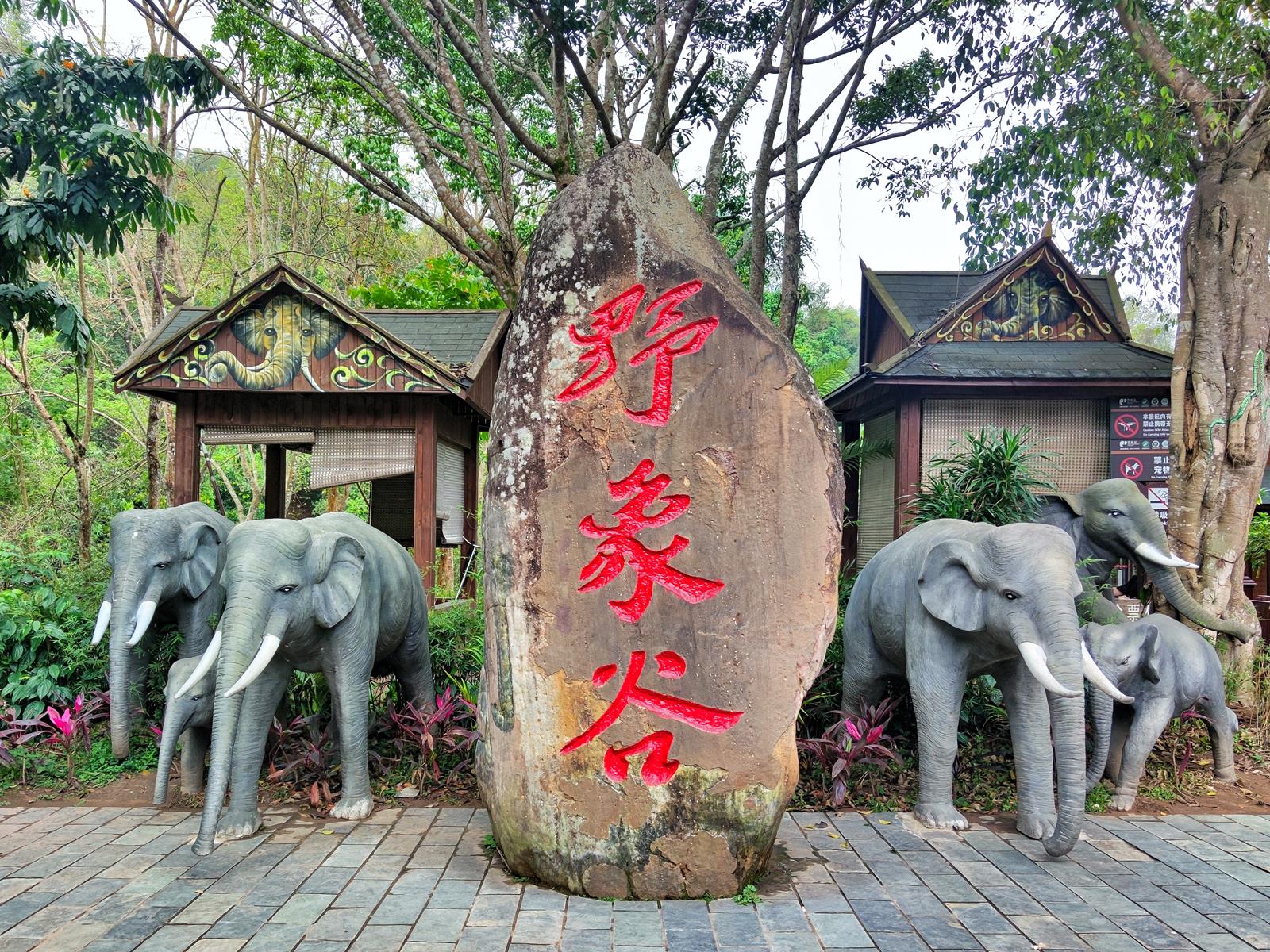
Xishuangbanna Wild Elephant Valley.
Local Cuisine and Accommodation Nearby
When visiting the enchanting Wild Elephant Valley in Xishuangbanna, not only will you immerse yourself in the lush tropical rainforest and majestic wildlife, but you’ll also have the chance to indulge in the region’s unique culinary delights and find comfortable accommodations nearby.
Dining Options
1. Dai Cuisine at Local Restaurants
One of the best ways to experience the local culture is through its food. Make sure to try the traditional Dai cuisine, known for its bold flavors and fresh ingredients. A must-try dish is Larb, a spicy salad made from minced meat, herbs, and spices, often served with rice. Another local delicacy is Grilled Fish, typically seasoned with aromatic spices and served alongside a tangy dipping sauce. Restaurants like Dai Yi Restaurant and Xishuangbanna Folk Cuisine are popular choices among travelers and locals alike, offering authentic dishes in a cozy setting.
2. Street Food Adventures
For the more adventurous eaters, exploring the street food scene in Jinghong, just a short drive from the valley, is highly recommended. Don’t miss out on Sticky Rice with Mango, a sweet treat perfect for hot days, or Barbecued Skewers, where you can enjoy a variety of meats grilled to perfection right before your eyes. The vibrant night markets provide a bustling atmosphere to sample these delicious bites.
3. Tea Houses
Given that Xishuangbanna is renowned for its tea, visiting a local tea house can be an enriching experience. Places like Pu’er Tea House offer a selection of fragrant teas, where you can participate in a traditional tea ceremony and learn about the significance of tea in Dai culture. Pair your tea with some local pastries for a delightful afternoon break.
Accommodation Nearby
1. Wild Elephant Valley Hotel
For those looking to stay close to the action, the Wild Elephant Valley Hotel is an ideal choice. Nestled within the natural surroundings, this hotel offers comfortable rooms with stunning views of the rainforest. Guests can enjoy modern amenities along with a touch of local design, making it a perfect retreat after a day of exploring.
2. Xishuangbanna International Hotel
Located in Jinghong, about a 30-minute drive from Wild Elephant Valley, the Xishuangbanna International Hotel provides a more luxurious stay. With spacious rooms, an on-site restaurant serving local and international cuisine, and a relaxing spa, this hotel is perfect for travelers seeking comfort and convenience.
3. Guesthouses and Homestays
For a more intimate experience, consider staying at one of the local guesthouses or homestays. Places like Dai Family Homestay offer a chance to connect with local families and immerse yourself in the Dai culture. You’ll not only enjoy home-cooked meals but also gain insights into the daily lives of the locals.
4. Eco-Lodges
If you want to fully embrace the natural beauty of Xishuangbanna, look for eco-lodges in the area. These accommodations often focus on sustainability and provide unique opportunities to experience the local environment while minimizing your impact. Rainforest Eco-Lodge is a popular option, allowing guests to enjoy nature trails, organic meals, and a peaceful atmosphere.
Conclusion
With an array of dining options and accommodations that cater to different preferences, your trip to Xishuangbanna Wild Elephant Valley promises not just breathtaking views of wildlife, but also a memorable culinary journey and comfortable stay. Whether you choose to savor the local flavors or relax in a hotel surrounded by nature, you’re sure to create lasting memories in this stunning region.
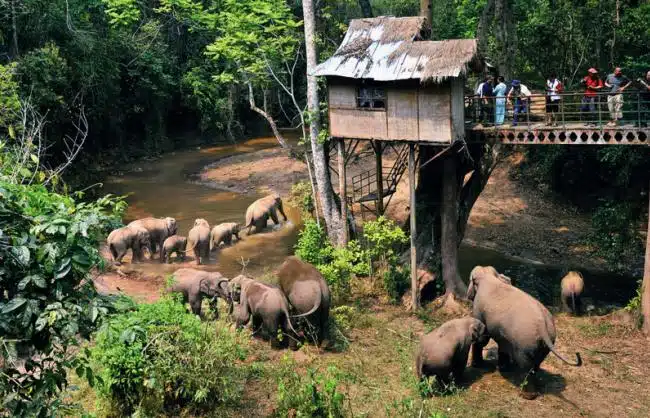
Xishuangbanna Wild Elephant Valley.
Frequently Asked Questions
Frequently Asked Questions about Xishuangbanna Wild Elephant Valley
1. What are the opening hours for Wild Elephant Valley?
Wild Elephant Valley is open daily from 8:00 AM to 6:00 PM. It’s best to plan your visit early in the day to maximize your chances of spotting wild elephants.
2. How do I get to Wild Elephant Valley from Jinghong?
Wild Elephant Valley is located about 40 kilometers (24 miles) north of Jinghong. You can take a taxi, rent a car, or join a guided tour to reach the valley. Public transportation options may also be available, but checking local schedules is recommended.
3. How much does it cost to enter Wild Elephant Valley?
The admission fee to Wild Elephant Valley is CNY 60 per person. This ticket grants you access to the park and its various attractions.
4. What is the best time to visit for elephant sightings?
The prime time to see wild elephants is during the dry season, which runs from October to April. Elephants are more likely to be active at dawn or dusk, so visiting during these times increases your chances of spotting them.
5. Are there any guided tours available in the valley?
Yes, guided tours are available and can enhance your experience by providing insights into the local wildlife and ecology. You can also consider custom tour options through travel agencies for a more personalized adventure.
6. What activities can I do in Wild Elephant Valley?
Popular activities include riding the sightseeing cable car for stunning views of the rainforest, walking along the elevated observation walkway, visiting the Asian Elephant Museum, and exploring the butterfly garden. If available, you can also participate in the “Walking with Elephants” experience.
7. Is there accommodation nearby?
While there are no accommodations directly within Wild Elephant Valley, Jinghong offers a range of hotels, guesthouses, and hostels. Staying in Jinghong allows for easy access to the valley and other nearby attractions.
8. Can I take photos of the elephants?
Yes, visitors are encouraged to take photos, but it’s important to maintain a respectful distance from the elephants to avoid disturbing them. Observing wildlife in their natural habitat is best done with caution and consideration for their space.
Final Thoughts on Your Trip
As your journey through the enchanting Wild Elephant Valley draws to a close, you will undoubtedly carry with you a treasure trove of memories from this unique sanctuary. From the awe-inspiring sight of Asian elephants in their natural habitat to the vibrant tapestry of tropical rainforest life, every moment spent here is a reminder of the delicate balance between wildlife and conservation.
Take a moment to reflect on the experiences that have touched your heart—the exhilarating ride on the cable car, the majestic views from the elevated walkway, and the fascinating insights gained at the Asian Elephant Museum. These elements not only connect you with nature but also underscore the importance of preserving these magnificent creatures and their environment for generations to come.
Whether you wandered through the lush trails, encountered rare wildlife, or immersed yourself in the rich ethnic culture of the region, Wild Elephant Valley offers a profound escape into a world where nature thrives. As you head back to the bustling city of Jinghong or continue your travels through China, let the spirit of the elephants and the beauty of Xishuangbanna inspire you to advocate for wildlife preservation and cherish the wonders of our planet. Safe travels, and may your adventures be filled with discovery and joy!